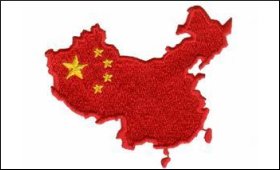|

|
How to do market entry research for China's industrial sectors
|
|

|
|
| Top Stories |
 |
|
|
|
Dezan Shira | 16 Jan, 2012
When considering entry to China's industrial sectors, some foreign investors think in terms of China as an emerging economy. Although this is true in some sectors, and the IMF still classifies China as a developing nation, it is a country that holds some US$2.4 trillion in reserves and a current sustained annual growth rate close to 9 percent. Several of China's industrial sectors such as high speed rail, telecommunications, wind and solar power, petrochemical processing, automotive, and steel production are performing at levels on par or better than some western countries.
With this in mind, China's industrial sectors are interested in procuring only the best and proven technologies from abroad – technologies that will enable them to operate more efficiently, reduce pollution and enable them to sustain growth in their domestic and export markets. Foreign companies that wish to provide such technology will find that they are welcome, but should proceed with a well designed strategy based on current and in-depth comprehensive market knowledge.
The first step to be taken is one that is often overlooked. It is that of trademark registration. This should be done prior to exposing one's brand to the Chinese market, even if the entry decision has not been made. China's trademark regulations allow for trademark registration on a first-come first-serve basis without qualification of trademark ownership. Often, foreign companies have entered the China market with considerable investment only to find that their trademarks have been registered by another party.
With trademark registration underway, the strategic research process can begin. Although each industry requires different data, the methodologies of discovery are basically the same – employing secondary and primary research to provide a balanced and objective report along the following guidelines:
(Source: Articlesbase)
* The author is a freelance writer.
* The views expressed by the author in this feature are entirely his own and do not necessarily reflect the views of SME Times.
|
|
|
| |
|
|
|
|
|
|
|
|
|
|
|
|
|
|
| |
| Customs Exchange Rates |
| Currency |
Import |
Export |
US Dollar
|
₹91.25
|
₹89.55 |
UK Pound
|
₹122.85
|
₹118.85 |
Euro
|
₹107.95
|
₹104.3 |
| Japanese
Yen |
₹59 |
₹57.1 |
| As on 29 Dec, 2025 |
|
|
| Daily Poll |
 |
 |
| What is your biggest hurdle to scaling right now? |
|
|
|
|
|
| Commented Stories |
 |
|
|
|
|
|
| |
|